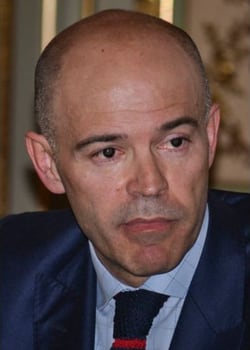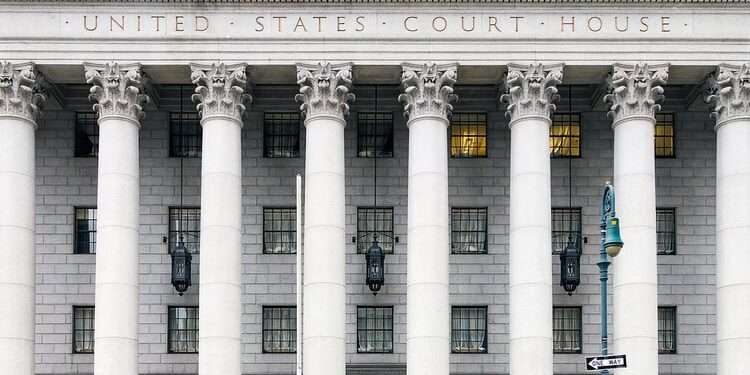The Mangione case, which is scheduled for its first preliminary hearing before the New York criminal court today, highlights the peculiarities of the American judicial system for the European observer.
Raúl César Cancio Fernández
The defendant accused of shooting the CEO of UnitedHealthcare as he arrived at a Manhattan hotel faces criminal charges based on two fundamental criteria: type and place of commission.
With regard to the first criterion, in the US justice system there are federal and state criminal offenses. With regard to the former, federal prosecutors have charged two counts of harassment, one count of murder with a firearm and one count of unlawful possession of a firearm. Note that the use of a firearm in a murder case carries with it the possibility of seeking the death penalty.
In parallel to the federal track, recall that Mangione was arrested on Dec. 9 in Altoona, Pennsylvania, where he was initially charged with possession of an unlicensed firearm, forgery and providing false identification to police.
Finally, the U.S. Attorney’s Office for the District of Manhattan found that Magione’s conduct was intended to “intimidate or coerce” the public and influence government policy, and therefore qualified as an act of terrorism.
To these procedural issues must be added a meta-legal aspect of extraordinary legal impact. It is public knowledge that a wave of sympathy and popular support has been generated around Mangione, with demonstrations at the courthouse gates shouting “Free Luigi”, protests against the health insurance industry and even a web page. There was even prolonged applause when his name was mentioned on “Saturday Night Live”. All of this has concluded with the creation of a legal fund through the GiveSendGo platform, which has already raised $460,000 to pay the legal costs of the proceedings, on the grounds that the U.S. private health insurance industry has ruined countless lives by denying people access to basic care. “Not surprisingly, Luigi’s alleged actions are understood and supported by tens of millions of hardworking Americans,” said the platform’s spokesperson.
Well, this groundswell of popular and media support may have a procedural effect that, if successful, would result in the non-guilt of the defendant. This is called jury nullification, a customary procedural practice that contemplates a juror refusing to convict a defendant despite overwhelming probative evidence. In other words, a juror’s reaction that perceives the potential conviction as materially unfair or morally unacceptable, despite what the law says and what the evidence shows. A procedural strategy particularly suited to a proceeding such as this, where the probative evidence is overwhelming. The defense might try to take advantage of some juror’s frustration with the insurance industry by arguing, ‘Hey, look, we saw what you did. We know what you did, but we’ll excuse it.’
It is clear to no one, therefore, that the jury selection process (voir dire) becomes much more important than the actual act of trial, not least because in that selective process the prosecution will have to be able to discriminate against citizens who prioritize their personal convictions over the evidence and the law. Michael Connelly’s The Law of Innocence has described this voir dire process like no other.
Jury nullification is linked to the very germ of the American nation (Sixt Amendment), when some colonial jurors refused to convict in protest against British power: “It is not only their right, but their duty in such a case to find the verdict according to their best understanding, judgment, and conscience, though in direct opposition to the direction of the Court,” John Adams argued in 1771.
In the run-up to the Civil War, many juries in the North refused to convict those accused of helping slaves escape and, reciprocally, some juries in the South acquitted whites accused of killing black people (Emmett Till, 1941).
Closer to home is the Kevorkian case, known as “Dr. Death,” who admitted to helping several people die by suicide, being acquitted three times by a jury of assisted suicide charges. And, of course, acquittals of battered women who killed their husbands, such as the case of Francine Hughes, have not been uncommon either.
Therefore, the presence in this case of a juror sensitized to the insurance industry cannot be ruled out. However, Mangione did not throw eggs or paint at Thompson.
 Raúl César Cancio Fernández
Raúl César Cancio Fernández
Doctor in Law, Universidad Rey Juan Carlos
A graduate of the Universidad Autónoma de Madrid, since 2003 he has been a member of the Cuerpo de Letrados del Tribunal Supremo and since 2013, he has been a corresponding member of the Real Academia de Jurisprudencia y Legislación (Royal Academy of Jurisprudence and Legislation). Member of the Editorial Board of the Revista Aranzadi Doctrinal; analyst of the team of Jurisprudential Analysis of the Judicial Documentation Center of the CGPJ; rapporteur of jurisprudence of the Association of Councils of State and Supreme Administrative Jurisdictions of the European Union. He has published sixteen books and almost two hundred articles in specialized journals. He participates in the Practicum of the Faculty of Legal Sciences of the Carlos III University; member of the panel of experts of the Chair Peace, Security and Defense of the University of Zaragoza and regular speaker at the courses of the Center for Legal Studies of the Administration of Justice.







